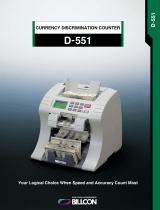
-- 3 --
TOCe
Rights reserved to alter specifications without notice.
1SAFETY 4...........................................................
2 INTRODUCTION 6...................................................
2.1 General 6..................................................................
2.2 Welding method 6...........................................................
2.3 Horizontal Welding or Welding on an Inclined Plane 6............................
2.4 Technical data 7............................................................
2.5 Main components 7.........................................................
2.6 Description of Main Components 8............................................
3 INSTALLATION 9....................................................
3.1 General 9..................................................................
3.2 Mounting 9.................................................................
3.3 Adjusting the brake hub 9....................................................
3.4 Connections 10..............................................................
4 OPERATION 11.......................................................
4.1 General 11..................................................................
4.2 Loading the welding wire 12...................................................
4.3 Changing the feed roller 13...................................................
4.4 Contact equipment for submerged--arc welding 14................................
4.5 Refilling with flux powder 15...................................................
4.6 Conversion of A6 TF (submerged--arc welding) to Twin--arc 15.....................
5 MAINTENANCE 16....................................................
5.1 General 16..................................................................
5.2 Daily 16.....................................................................
5.3 Regularly 16.................................................................
6 TROUBLESHOOTING 17..............................................
6.1 General 17..................................................................
6.2 Possible faults 17............................................................
7 ORDERING OF SPARE PARTS 17......................................
WEAR COMPONENTS 18.................................................
DIMENSION DRAWING 19................................................
SPARE PARTS LIST 21...................................................






















